Horus Heresy – Liber Hereticus
The second supplement for the new Horus Heresy covers the Traitor Legions and is called Liber Hereticus, and provides the same information as the Liber Astartes does for the loyal legion for those who follow the Warmaster Horus.
Each of the legion books is 55 EURs and more than 300 pages thick. They are produced as full coloured hard cover, with thick paper and even a cloth bookmark. And this review on the Liber Heretics is going to give you a similar deep dive, as we did earlier on the Liber Astartes.
Similar to the rulebook and the Liber Astartes the first double page of the book covers a detailed map of the Imperium, giving you an overview of the campaign map. Yet, a bit interesting, as we have the German books in these reviews, the map in the Hereticus book is English and not German. And the print seems a bit dark in the front, and is missing the header in the upper right corner (which is there on the last spread in the back). Beyond that the maps are identical, without any focus on loyal or traitor prints, and cover the home worlds and movements, along with a brief legend.
As for the content of this book. All the rules are kept in the main rulebook, and the Liber Hereticus and Liber Astartes have their complete focus on the army lists and unit entries, along with their special rules and profiles, embedded in lore and artwork.
The table of content gives you a proper overview, on what to expect. It is double sided to cover all the content. As you can see, the first 90 pages are rules for the generic army list and unit entries, followed by another 50 pages covering the Rites of War, armoury, weapons systems and so on.
The layout is kept clean and read-able. You have diagrams and overviews to show more complex information and everything is well integrated into the design. The content is identical to the loyal book, with small modifications to fit the Liber Hereticus. For example, the aquila is replaced with the eye of horus on these pages, along with the units used as part of the artwork or dioramas are traitors in this book.
These pages cover some basic information on composing your forces for the Horus Heresy. A cross overview, which Legions would fight side by side. Some alliances are well-known, with others a bit surprising for those who are not that familiar with the Horus Heresy novels / audiobooks. Compared to the Warhammer 40,000 range, the design is a bit lighter, less skulls and leans towards the initial campaign books by Forge World for the conflict. There are a lot of things picked up again, like artwork or illustration, and the way it is arranged gives it a documentary, narrative look and feel, as it is history and not like the military data sheets we had in some editions of Warhammer 40,000.
After page ~150 we have another 200 pages in front of us, covering the 9 different Traitor legions, who sided with the Warmaster. And similar to the spread in the Liber Astartes, I don't want to give you too much spoilers and give you just an overview on the well-made layout by using the example of the Sons of Horus. Each of the chapters is shown this way, with a brief introduction, the rules for the Legion themself, their rites of war, some legion specific rules that distinguish them from one another. These few pages are always followed by their mightiest Lord of War, their Primarch, along with further army list entries, exclusive to their legion. After the rules there is a double page with the coat of arms, shoulder pads and uniform colour, with a second page showing vehicles in the according Legion colours. Each Legion chapter is then closed by a double page full of painted miniatures, showing their primarch and a mix of different units from their ranks, including both Forge World resins and the new plastic kits.
As I did with the loyal legions, I'll give you an overview of the 9 traitor legions, each of them linked to their summary on Warhammer Community, where they gave a brief overview on them with their rites of war and some rule excerpts. I'll focus mostly on the unit entries, that the Liber Hereticus grants them access to, along with some armoury specifics and link accordingly to the different warhammer wikis.
The first legion introduced in this book, are the 3rd Legion, the Emperors Children. They are the only legion allowed (prior to the Horus Heresy) to wear the Imperial Eagle and their homeworld was Chemos. Their traits cover their search for perfection, along with the first modifications by Fabius Bile, and access to their phoenician weaponry and a Phoenix Warden as Legio Consul. Their unit entries start with their primarch Fulgrim, and two Elite units with Phoenix Terminators and Palatine Blades. The first "corrupted" unit choice with the support Kakophoni and the famous HQ units known from the Lord Commander Eidolon, Captain Saul Tarvitz (loyal of course) and Captain Lucius.
Only second to the Imperial Fists in Siege warfare (personal opinion of the author) are the 4th Legion, the Iron Warriors from Olympia, and that is picked up by their rites of war and other legion specific rules. A rather thin section of additional units, you have the primarch Perturabo, of course, and access to the Elite units of the Iron Circle Maniple (Domitar-Ferrum Class Battle Automata) and the Tyrant Siege Terminators as a support unit.
The cruel rulers of Nostramo, Night Lords, the 8th legion, are all about terror. Extended to such a degree that they can even choose a fitting rite of war, that moves the battle absolutely on their home turf, incl. night fighting, fear causing characters and more. Just like their Primarch Konrad Curze would love it. The further unit choices are mostly Elite, with Terror Squad, Night Raptors and the Contekar terminators. But you have the option to choose Sevatar as an HQ.
The focus of the 12th Legion, the World Eaters, isn't really a surprise. They go obviously for close combat, with the options for Berserkers. And that is something you find again in the unit list. Led by the Red Angel himself, their primarch Angron, and the elite unit choices of the Red Butcher and Rampagers. For those matches, where you think the Primarch is oversized (or not enough) you have Khârn the Bloody as an HQ option.
Barbarus was home to the 14th Legion, Death Guard, who would later fall to Nurgle. The ever-marching pale grey horde is captured quite well and effective, if you see their Relentless rule. And their connection to the plague lord is seen in their armoury as well with toxin bombs and power scythes. Under the command of their Primarch Mortarion or HQ option Calas Typhon, they can add terminators as elite units with the Deathshroud as support units with the Grave Warden.
The Thousand Sons, 15th legion and formerly based upon Prospero are very clear in their orientation. And that's psykers. The options, the weaponry, the special rules, all are built around that. Yet, the unit lists, who give you the profile of their primarch Magnus the Red, does not only cover the cabals like Sekhmet Occult Terminators or Khenetai Occult Blade Cabal, but Contemptor Osiron Dreadnought and Castellax Achae Automaton as elite units as well. And for HQ choices you have access to Ahzek Ahriman and Magistus Amon.
The warmaster's own legion, the 16th, the former Lunar Wolves, are the Sons of Horus. The rules give you options to go for either the traitor Sons of Horus, with according traits for chosen of the Dark Gods, or keep it loyal with the Lunar Wolves. And as Horus Lupercal, wouldn't be bad ass enough, you can even upgrade him (for hefty points) to Ascended Horus. You really benefit from using the Elite units of the Justaerin and Reaver Attack Squad). And of course, what would be the this legion, without their well-known characters, given you HQ options with Maloghurst the Twisted), Ezekyle Abaddon and the loyalist Garviel Loken.
The 17th Legion, the Word Bearers, were the first to betray the Emperor. And this role, as the first to fall, is repeatedly found in the way they are played. You have tainted weapons, you tainted troops and of course weaponry like warp fire. Their units naturally cover their primarch Lorgar, along with some well-known names as HQ units: Zardu Layak, Argel Tal, First Chaplain Erebus and Kor Phaeron. And you have three elite units: Gal Vorbak, Ashen Circle and Mhara Gal Dreadnought.
The most mysterious legion, the 20th and last of the first founding legion, are the Alpha Legion. This legion is all about guerrilla warfare and special operations. They have their Legion specific consul, a Saboteur. Their first entry in the unit list is their Primarch Alpharius (or is it Omegon? or both? Who knows...). The two legion specific units are the Elite Lernaean Terminators and Assault Headhunter Killteam as well as the HQ choices of Exodus and Armillus Dynat.
Following the Alpha Legion is "only" another double page of artwork and the campaign map shown above to close the book.
And as we had the Land Raider in the Liber Astartes on the Ultramarines showcase, we have another variant of the Land Raider Proteus, this time with a ramp in front, again hiding in plain sight, but this time in the show case of the Emperors Children. The studs on the tracks give it away that this is not a resin kit, but the new plastic kit.
Conclusion
My conclusion is the same as with the Liber Astartes book. From my point of view, 300+ pages hard cover right from the start, covering just one side of legions each is proper value and a very decent way to set up the Horus Heresy. Of course, I you just want to know about a single legion, that slice of pie might be a bit thin, but to be honest, they had to start somewhere and this starting point is well-made. In direct comparison the Forge World Horus Heresy books are more detailed, yes. But as I wrote earlier, this is just the beginning and we can be pretty sure, that we will see the campaign supplements going more into detail, adding more units and probably characters, along with more artwork and lore on the participating legions. The initial army list is already quite vast with a lot of options to distinguish your forces from others and to recreate your preferred way of leading your troops into battle. And as the loyalist have the option to field traitorous forces of their legions, this book gives you the option to cover those loyal troops of the later traitor Legions, that for example were destroyed on Isstvan.
As you will probably know by now, I don't do tournament pov discussion of rules, no meta discussions. There are other websites on the internet that will provide you with that, for example in the case of these books Goonhammer. I've argued about the value of these books above and I think they are proper value. 340-page army list supplements as a hardcover for 55 EUR is reasonable, especially with the comparison of ~200 pages 40k Codices that set you back around 40 EUR, and especially in comparison to the ~300-page books by Forge World, that were 100 EUR retail and are/were (depending on the reprints) much higher valued on the collector's market.
Games Workshop has already announced the next supplement, Liber Mechanicum, along with a road map for the Horus Heresy, with lots of PDFs coming to get you gaming as soon as possible. And that's just the army lists, without the update or re-release of the campaign supplements, that will most likely start with the Betrayal in the Isstvan system.
Warhammer 40,000 and The Horus Heresy are brands by Games Workshop.
The reviewed product item was provided by the manufacturer.
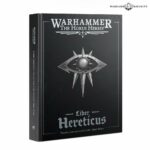

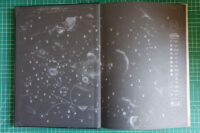
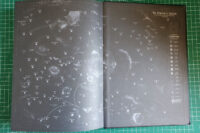
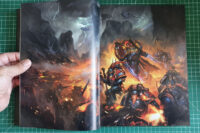
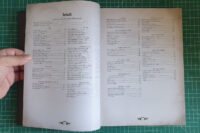
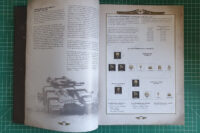
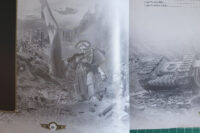
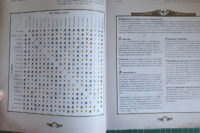
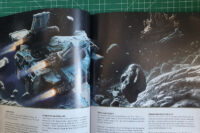
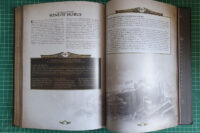
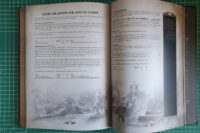
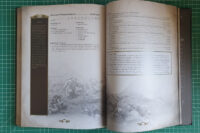
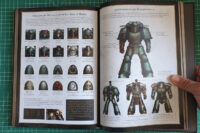
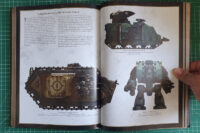
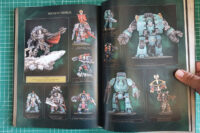
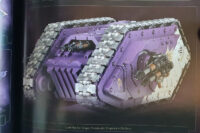












Leave a Reply